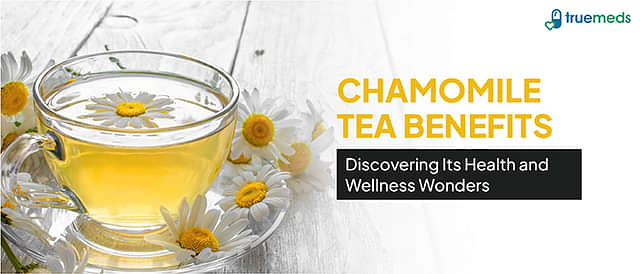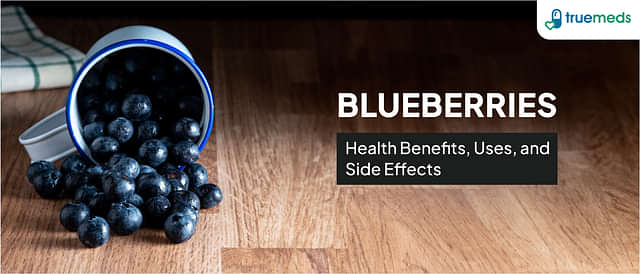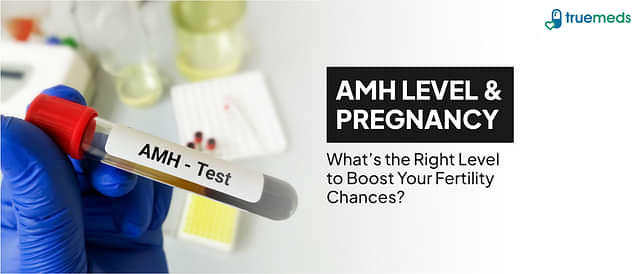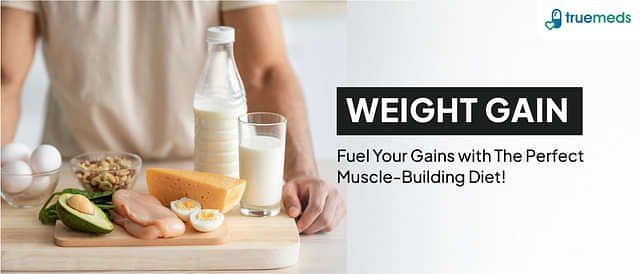Ragi (Finger Millet): Nutrition, Benefits, and Delicious Recipes for Weight Management
Last updated on : 01 Dec, 2025
Read time : 8 min
Ragi, also known as finger millet, is a naturally gluten-free and nutrient-rich grain that has been a staple in the Indian diet for centuries. It’s an exceptional source of key nutrients, including calcium, iron, protein, and dietary fibre, making it especially useful for bone health, weight management, and blood sugar control [1]. Because of its low glycemic index, ragi is often suggested as a valuable addition to a balanced diet, particularly for individuals aiming to manage blood glucose levels.
In this article, we’ll look at the comprehensive nutritional value of ragi, its potential health benefits based on available evidence, any possible side effects, and simple, healthy ways to include it in your daily meals.
Ragi Nutrition Value and Facts
Ragi is packed with essential micronutrients, including thiamine, iron, magnesium, zinc, chromium, and iodine. It is renowned for its high calcium content, which can range from 300 to 400 mg per 100g, making it one of the richest plant-based sources of calcium among cereals, significantly higher than both wheat and rice [2]. This mineral richness is why, in traditional Indian diets, ragi is often considered a ‘cooling’ food, believed to help maintain the body’s acid-base balance.
Here is the nutritional value of a 100g serving of raw ragi grain [3]:
|
Nutrients |
Nutritional Value |
| Energy | 336 Kcal |
| Carbohydrates | 72.6 g |
| Fibre (Dietary) | 3.6 g |
| Protein | 7.7 g |
| Fats | 1.5 g |
| Calcium | 350 mg |
| Iron | 3.9 mg |
| Thiamin (Vitamin B1) | 0.42 mg |
| Riboflavin (Vitamin B2) | 1.1 mg |
| Niacin (Vitamin B3) | 0.19 mg |
Potential Health Benefits of Ragi
Ragi’s unique nutritional profile contributes to several potential health advantages.
Supports Weight Management
Ragi is a beneficial grain for individuals aiming to manage their weight. Its high content of dietary fibre and polyphenols contributes to a greater feeling of fullness (satiety) [4]. This increased satiety can help naturally reduce overall calorie intake and support weight loss efforts when incorporated into a calorie-controlled diet.
Excellent Source of Calcium for Bone Health
As highlighted above, ragi’s exceptionally high calcium content is vital for maintaining strong bones and teeth [2]. This makes it particularly beneficial for:
- Growing Children: Supporting optimal bone development and growth.
- Individuals with Lactose Intolerance: Serving as a plant-based alternative to support calcium intake.
- Preventing Osteoporosis: Regular consumption may help fortify bone density, potentially lowering the risk of fractures and conditions like osteoporosis later in life.
May Help Manage Blood Glucose Levels
Ragi has a low glycemic index (GI) and high fibre content, which contributes to a slower release of glucose into the bloodstream compared to high-GI grains. Preliminary research suggests that the phenolic compounds and dietary fibre in ragi can help regulate blood sugar levels and may improve insulin sensitivity [1], making it a sound dietary choice for people with diabetes or those at risk.
Rich in Essential Minerals and Amino Acids
Ragi is a valuable source of plant-based protein and is considered a complete food as it contains all nine essential amino acids [5]. These amino acids, such as Methionine and Lysine, are crucial for muscle repair, growth, and overall body function. Furthermore, its richness in iron is essential for producing haemoglobin and can aid in the prevention or management of iron-deficiency anaemia [5].
Supports Skin and Hair Health
Ragi contains various antioxidants and amino acids like Methionine and Lysine, which may help protect the skin from oxidative damage [4]. The presence of minerals like iron and zinc along with Vitamin E may also promote healthier hair growth, strengthen hair follicles, and contribute to a healthier scalp.
Beneficial During Pregnancy and Lactation
Due to its dense nutritional profile, ragi is considered a nutritious food for pregnant and lactating women. Its high content of calcium and iron is crucial for fetal growth and development, while also supporting the mother’s health [1]. Historically, ragi has been acknowledged as a galactagogue, which is believed to support and boost breast milk production in nursing mothers [4].
How to Incorporate Ragi Into Your Diet
Ragi is highly versatile and available in various forms—whole grain, flour, flakes, semolina, and even pasta.
Simple Ways to Use Ragi:
- Ragi Roti/Paratha: Mix Ragi flour with wheat, bajra, or jowar flour for a wholesome twist.
- Ragi Dosa & Idli: Blend Ragi flour with rice or lentil batter.
- Ragi Porridge (Malt): Sweeten with jaggery and flavour with cardamom for a hearty breakfast.
- Baking: Use Ragi flour in cookies, muffins, and pancakes for a healthy upgrade.
Healthy And Tasty Ragi Recipes
Here are super-easy ragi recipes that can be prepared in no time:
1. Breakfast Smoothie (High-Fibre, Dairy-Free)
Blend ripe banana, 2-3 tablespoons of pre-cooked Ragi flour, almond milk, spinach, and a hint of cinnamon. A protein- and fibre-rich smoothie to kick-start your day.
2. Halwa (Naturally Sweetened)
Cook Ragi in ghee or coconut oil with nuts, raisins, and natural sweeteners like dates or jaggery.
3. Instant Ragi Dosa
Combine Ragi flour, rice flour, chopped onions, green chillies, and coriander with water to make a batter. Spread thinly on a hot tawa (griddle) and cook until crispy.
Possible Side Effects of Ragi
Ragi is generally a safe and healthy cereal. However, as with any food, excessive intake or underlying medical conditions may lead to certain side effects.
- Digestive Discomfort: Some people may experience stomach discomfort, such as bloating, gas, or diarrhoea, if consuming ragi in very large amounts, typically due to the high fibre content. Gradually increasing the quantity can help the digestive system adjust.
- Oxalic Acid Content: Ragi contains oxalic acid. For susceptible individuals, particularly those with a history of calcium-oxalate kidney stones, high consumption of foods rich in oxalic acid should be discussed with a doctor, as it may contribute to stone formation [4].
Consuming ragi in moderation and drinking plenty of water is always advisable. Individuals with a history of kidney stones or known food allergies should consult a dietitian or a physician before significantly increasing their ragi intake.
Conclusion
Ragi is a highly nutritious, naturally gluten-free grain that offers a wide spectrum of potential health benefits. From supporting bone health and aiding weight management to contributing to stable blood sugar levels, it can be a valuable part of a balanced diet. Its high fibre content helps keep you full for longer, making it especially helpful for those looking to manage their weight or control cravings. Whether you are aiming to meet your daily calcium needs, support your child’s growth, or simply make healthier food choices, ragi is a versatile and accessible option that fits easily into everyday Indian meals.
Expert Note:
“Packed with essential amino acids and minerals, ragi is more than just a grain—it’s a complete wellness food that provides foundational nutrition for every stage of life.”
– Dr. Kavya Rejikumar
Frequently Asked Questions (FAQs)
Is ragi better than atta (whole wheat flour)?
It depends entirely on your specific dietary goals and health needs. Ragi is gluten-free, higher in fibre, and provides significantly more calcium and iron than atta, making it an excellent choice for those with gluten intolerance, anaemia, or osteoporosis concerns. Atta, on the other hand, typically has a slightly higher protein content and is a more common staple. Your choice should align with your nutritional requirements and taste preferences.
Can we eat ragi at night?
Yes, ragi can be consumed at night as part of a balanced meal. Its complex carbohydrates and fibre content can support sustained energy and satiety without causing rapid blood sugar spikes, making it a good choice for a light yet nutritious dinner in various forms like ragi roti, dosa, or soup.
Who should not eat ragi?
Individuals with a history of calcium-oxalate kidney stones should exercise caution due to ragi’s oxalic acid content and should consult their doctor. Also, while ragi is gluten-free, individuals with severe food allergies should always confirm with a doctor or dietitian.
Which vitamin is in ragi?
Ragi is a good source of B-complex vitamins, which are crucial for energy production, nervous system function, and metabolism. These include Vitamin B1 (Thiamine), Vitamin B2 (Riboflavin), and Vitamin B3 (Niacin).
Does ragi contain Vitamin B12 and Vitamin D?
No, ragi does not naturally contain Vitamin B12 or a significant amount of Vitamin D. Vitamin B12 is primarily found in animal products, making fortified foods or supplements necessary for individuals following a vegan or strict vegetarian diet. To combat Vitamin D deficiency, focus on fortified dairy/plant-based milk, fatty fish, and moderate sun exposure, as ragi is not a key source.
References
[1] Shobana, S., Harsha, R. K., Nithiyananth, S., & Malleshi, N. G. (2019). Finger Millet (Ragi) – A Potential Source of Functional Food Ingredients and Health Benefits: A Review. Frontiers in Sustainable Food Systems, 3, 1–15. https://www.ncbi.nlm.nih.gov/pmc/articles/PMC6574765/
[2] Jagati, P., Mahapatra, I., & Dash, D. (2021). Finger millet (Ragi) as an essential dietary supplement with key health benefits: A review. International Journal of Home Science, 7(2), 94-100. https://www.researchgate.net/publication/351659858_Finger_millet_Ragi_as_an_essential_dietary_supplement_with_key_health_benefits_A_review
[3] U.S. Department of Agriculture (USDA). (2020). FoodData Central: Millet, Ragi (Finger Millet) Raw. https://fdc.nal.usda.gov/fdc-app.html#/food-details/169707/nutrients
[4] AskNestlé. (2023). The Incredible Health Benefits of Finger Millets (Ragi): India’s Ancient Nutri-cereal. https://www.asknestle.in/expert-advice/health-benefits-of-finger-millets-ragi
[5] Sadhguru.org. (2023, August 30). Ragi (Finger Millet): 7 Incredible Health Benefits & 6 Healthy Recipes. https://isha.sadhguru.org/en/blog/article/ragi-benefits-recipes
Disclaimer
Our healthcare experts have carefully reviewed and compiled the information presented here to ensure accuracy and trustworthiness. It is important to note that this information serves as a general overview of the topic and is for informational purposes only. It is not intended to diagnose, prevent, or cure any health problem. This page does not establish a doctor-patient relationship, nor does it replace the advice or consultation of a registered medical practitioner. We recommend seeking guidance from your registered medical practitioner for any questions or concerns regarding your medical condition.
Popular Articles
Recommended Articles
Recent Articles
Company
About UsHealth ArticleHealth StoriesHealth LibraryDiseases & Health ConditionsAyurvedaUnderstanding Generic MedicinesAll MedicinesAll BrandsNeed HelpFAQSecuritySubscribe
Registered Office Address
Grievance Officer
Download Truemeds
Contact Us
Our customer representative team is available 7 days a week from 9 am - 9 pm.
v4.10.2
2025 - Truemeds | All rights reserved. Our content is for informational purposes only. See additional information.
Our Payment Partners














































